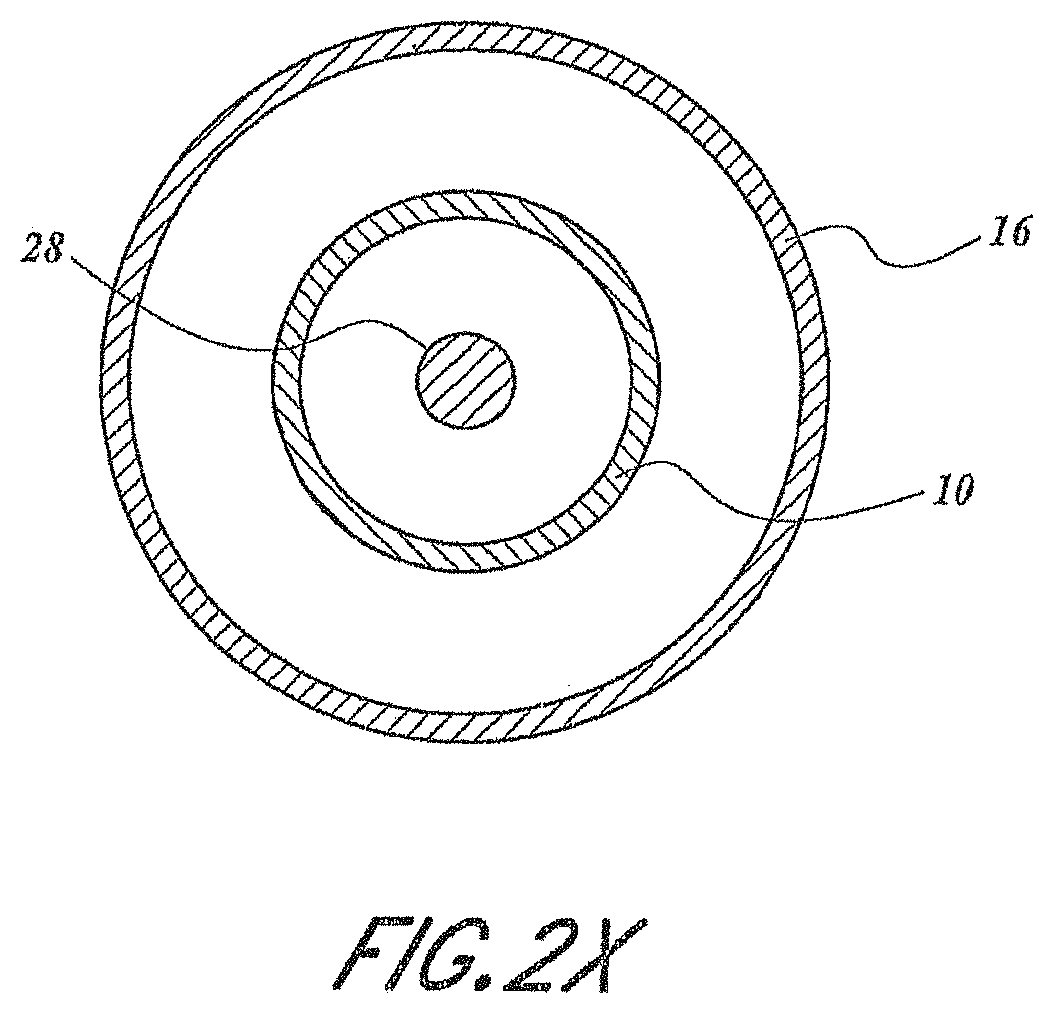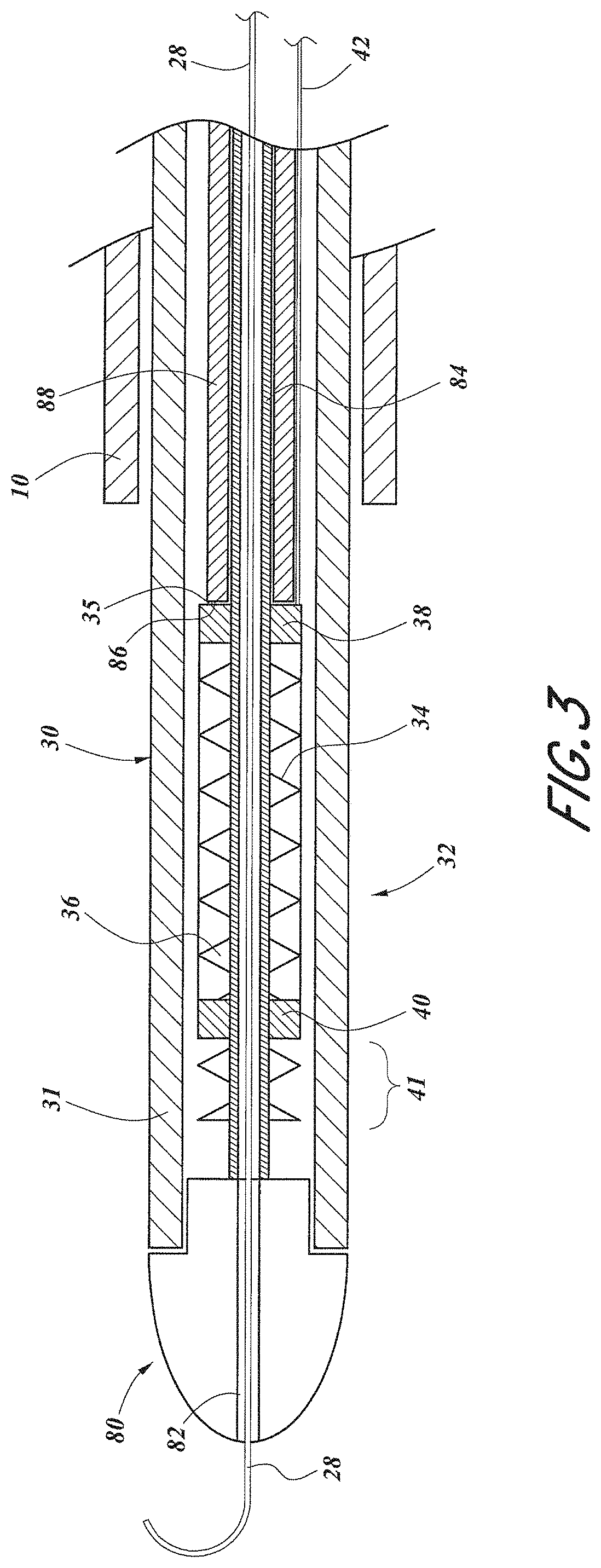Embolic filter with controlled aperture size distribution
a filter and aperture size technology, applied in the field of embolism filters with controlled aperture size distribution, can solve the problems of anti-embolic devices, not receiving wide acceptance, and cognitive impairment and disability
- Summary
- Abstract
- Description
- Claims
- Application Information
AI Technical Summary
Benefits of technology
Problems solved by technology
Method used
Image
Examples
Embodiment Construction
[0032]The protective filter of the present invention is designed to provide vascular protection and filtering of debris that can be created during interventional procedures. In one exemplary use, the filter will protect the aortic arch during the passage of interventional devices whose destination is the heart. The protective filter will preferably cover all three great vessels (brachiocephalic, left common carotid and left subclavian blood vessels) leading to the brain. The filter includes a pore size distribution that significantly reduces both the size and cumulative volume of debris that would otherwise go to an end organ like the brain thereby protecting against a stroke and other negative impact to cognitive functions.
[0033]The device of the present invention is configured to block debris above one or more predetermined threshold sizes from entering the cerebral circulation. Some blocked debris may become entrapped in the membrane, while other blocked debris will be deflected ...
PUM
 Login to View More
Login to View More Abstract
Description
Claims
Application Information
 Login to View More
Login to View More - R&D Engineer
- R&D Manager
- IP Professional
- Industry Leading Data Capabilities
- Powerful AI technology
- Patent DNA Extraction
Browse by: Latest US Patents, China's latest patents, Technical Efficacy Thesaurus, Application Domain, Technology Topic, Popular Technical Reports.
© 2024 PatSnap. All rights reserved.Legal|Privacy policy|Modern Slavery Act Transparency Statement|Sitemap|About US| Contact US: help@patsnap.com










